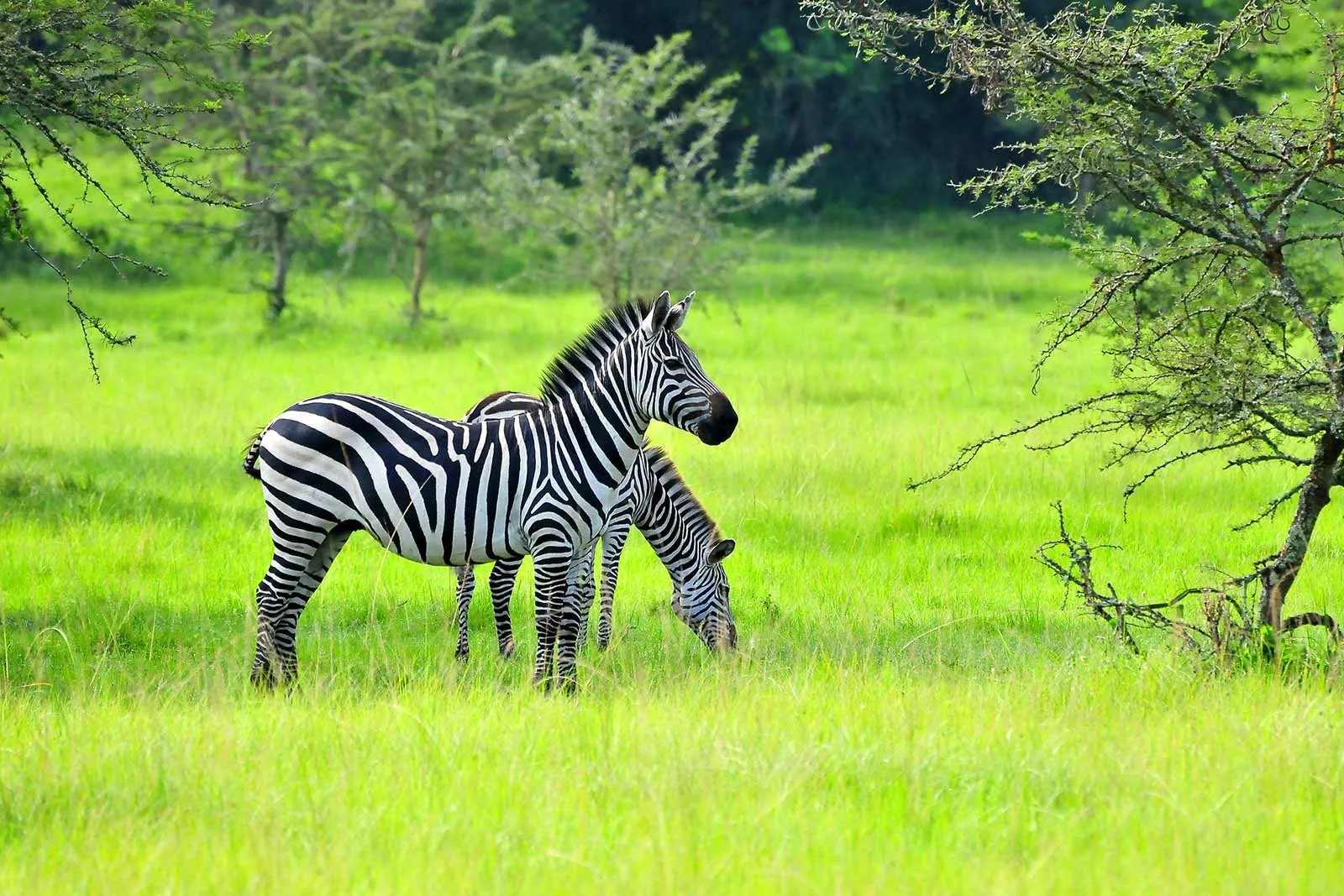The Enigmatic Zebras of Africa: A Closer Look at their Unique Features and Fascinating Lives.
Zebras in Africa – Facts | Habitant. Zebras, with their distinctive black and white stripes, are among the most iconic and enchanting creatures that roam the vast landscapes of Africa. This article delves into the lives of these enigmatic equids, exploring their habitat, physical characteristics, behavior, gestation period, and lifespan.
Description:
Zebras belong to the horse family, Equidae, and are known for their striking black and white stripes. There are three main species of zebras: the Plains Zebra (Equus quagga), the Grevy’s Zebra (Equus grevyi), and the Mountain Zebra (Equus zebra). Each species exhibits unique stripe patterns, making them easily distinguishable from one another.
The Plains Zebra, the most common species, features broad and widely spaced black stripes on a white background. Grevy’s Zebra, on the other hand, boasts narrower and closely spaced stripes, often covering the entire body, while the Mountain Zebra displays vertical stripes on its neck and torso.
Habitat:
Zebras inhabit a variety of ecosystems across Africa, showcasing their adaptability to diverse environments. Plains Zebras are found in savannas, grasslands, and open woodlands, whereas Grevy’s Zebras prefer arid and semi-arid regions with sparse vegetation. Mountain Zebras, as the name suggests, inhabit mountainous terrain with rocky slopes and plateaus.
Behavior: – Zebras in Africa – Facts | Habitant
These social animals are known for their tight-knit family structures. Zebras often form groups, known as dazzles, for protection against predators. The black and white stripes serve as a form of camouflage, making it challenging for predators to single out an individual zebra from the group.
Zebras are herbivores, primarily grazing on grasses. Their keen sense of hearing and excellent eyesight aids in detecting predators such as lions and hyenas. When threatened, zebras are capable of reaching impressive speeds, utilizing their powerful hind legs for swift escapes.
Gestation Period:
The gestation period for zebras varies among the species. Plains Zebras have a gestation period of around 12 months, while Grevy’s Zebras typically have a longer gestation period of approximately 13 months. Mountain Zebras fall in between, with a gestation period of around 12 to 13 months.
Lifespan: – Zebras in Africa – Facts | Habitant
In the wild, zebras generally have a lifespan of 20 to 25 years. However, various factors such as predation, disease, and environmental conditions can influence their life expectancy. In captivity, zebras may live longer, with some reaching up to 30 years under proper care and conditions.
Conclusion: – Zebras in Africa – Facts | Habitant
Zebras, with their captivating appearance and intriguing behaviors, play a crucial role in the rich tapestry of African wildlife. As unique and resilient creatures, they continue to be a symbol of the vast and diverse ecosystems that characterize the continent. Understanding and appreciating these remarkable equids contributes to the conservation efforts aimed at preserving their habitats and ensuring their survival for generations to come.








